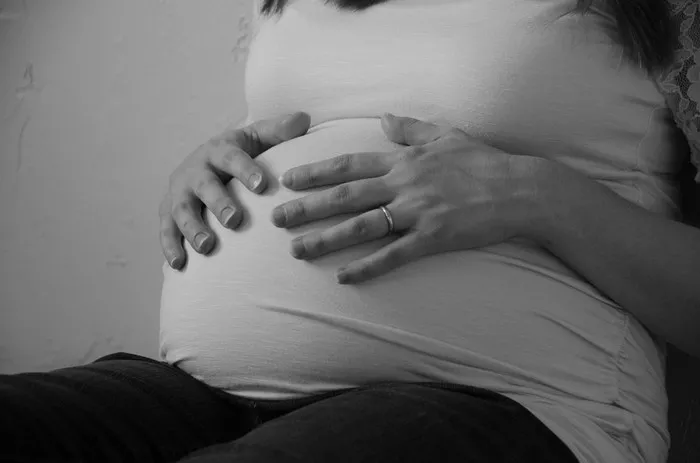Uterine fibroids are a common gynecological condition that affects a significant number of women, especially during their reproductive years. These noncancerous growths can have a profound impact on a woman’s quality of life, fertility, and overall health. Understanding where fibroids are located within the uterus is crucial as it helps in predicting the symptoms they may cause, the potential effects on pregnancy, and the most appropriate treatment options. Fibroids can vary in size, number, and location, and each location presents its own set of challenges and considerations. By delving into the details of fibroid locations, women can gain a better understanding of their condition and make more informed decisions about their healthcare.
What Are Uterine Fibroids
Uterine fibroids, also known as leiomyomas or myomas, are composed of smooth muscle cells and fibrous connective tissue. They are estrogen and progesterone-sensitive, meaning their growth is often influenced by hormonal changes in a woman’s body. Fibroids can range in size from tiny nodules that are barely detectable to large masses that can distort the shape of the uterus. There are different types of fibroids based on their location within the uterus:
Subserosal fibroids: These fibroids grow on the outer surface of the uterus. They can sometimes be felt as a lump in the lower abdomen and may cause pressure symptoms on adjacent organs like the bladder or bowel if they enlarge significantly. For example, a large subserosal fibroid could lead to frequent urination if it presses on the bladder, or constipation if it affects the bowel.
Intramural fibroids: Located within the muscular wall of the uterus, they can distort the uterine cavity. As they grow, they can interfere with the normal contractions of the uterus during menstruation, potentially leading to heavier bleeding and pain. Their presence might also disrupt the implantation of embryos, affecting fertility. In some cases, intramural fibroids can cause the uterus to become enlarged and irregular in shape.
Submucosal fibroids: These fibroids develop just beneath the inner lining of the uterus and are more likely to cause pronounced menstrual problems, like heavy and prolonged bleeding, as well as infertility in some cases. Since they are close to the area where menstruation occurs, they can directly influence the shedding of the endometrium. Submucosal fibroids can also protrude into the uterine cavity, further disrupting normal uterine function.
Subserosal Fibroids: The Outer Surface Growths
Subserosal fibroids have their own unique characteristics and implications:
Location and appearance: These fibroids attach to the outer serosa layer of the uterus. They can grow outward, away from the uterine cavity, and may form a visible bulge on the surface of the uterus. In some cases, they can even grow on a stalk, known as a pedunculated fibroid. This type of subserosal fibroid can sometimes twist, cutting off its own blood supply, which can lead to severe pain and require emergency medical attention.
Symptomology: As mentioned, the main symptoms associated with subserosal fibroids are related to pressure on surrounding organs. If they press on the bladder, women may experience increased frequency of urination, urgency, or even incontinence in severe cases. When they affect the bowel, constipation, abdominal discomfort, or a feeling of incomplete bowel movements can occur. However, many subserosal fibroids are asymptomatic, especially when they are small, and may only be discovered incidentally during a routine pelvic exam or imaging test.
Treatment considerations: For small, asymptomatic subserosal fibroids, doctors may recommend a watchful waiting approach, with regular monitoring through pelvic exams and imaging. If they become large or start to cause significant symptoms, treatment options include surgical removal. This can be done through laparoscopy, which is a minimally invasive procedure that involves making small incisions in the abdomen and using specialized instruments to remove the fibroid. In some cases, if the fibroid is very large or has a complex attachment, an open surgical approach may be necessary.
Intramural Fibroids: Within the Muscular Wall
Intramural fibroids pose distinct challenges and have specific impacts:
Location and impact on uterine structure: These fibroids are embedded within the thick muscular wall of the uterus. As they grow, they can distort the normal architecture of the uterus, causing it to become enlarged and misshapen. This can interfere with the normal contractions of the uterus during menstruation and childbirth. For example, during menstruation, the irregular shape of the uterus due to intramural fibroids can lead to ineffective expulsion of the endometrial tissue, resulting in heavier bleeding and longer periods.
Effect on fertility and pregnancy: Intramural fibroids can have a significant impact on fertility. They can disrupt the implantation of embryos by altering the uterine environment. In pregnancy, they can increase the risk of complications such as miscarriage, preterm labor, and abnormal fetal positioning. Women with intramural fibroids who are trying to conceive may need to undergo additional fertility evaluations and potentially treatment to optimize their chances of a successful pregnancy.
Treatment options: Depending on the size, number, and location of intramural fibroids, treatment can vary. For smaller fibroids that are not causing severe symptoms, medical management with pain relievers and hormonal therapies to slow growth may be considered. In cases where fertility is a concern, surgical removal through myomectomy, either laparoscopically or through an open incision, is often recommended. This procedure aims to remove the fibroids while preserving the uterus to maintain the woman’s reproductive potential.
Submucosal Fibroids: Beneath the Inner Lining
Submucosal fibroids have a direct influence on menstruation and fertility:
Location and its effect on menstruation: These fibroids lie just beneath the endometrium, the inner lining of the uterus that sheds during menstruation. Their presence can cause the endometrial lining to become uneven, preventing it from shedding evenly. This leads to heavy and prolonged menstrual bleeding, often with the presence of large blood clots. Women with submucosal fibroids may experience significant anemia due to excessive blood loss during their periods.
Impact on fertility and implantation: Submucosal fibroids are known to interfere with embryo implantation. The irregular endometrial surface created by these fibroids makes it difficult for the embryo to attach properly. As a result, women with submucosal fibroids may have difficulty conceiving. In some cases, even if conception occurs, the risk of miscarriage is increased due to the unstable uterine environment.
Treatment modalities: Given their significant impact on menstruation and fertility, submucosal fibroids often require more aggressive treatment. Hysteroscopic resection is a common approach, which involves inserting a thin, lighted tube through the cervix into the uterus to directly visualize and remove the fibroids. This minimally invasive procedure can be very effective in improving menstrual symptoms and fertility outcomes. In some cases, if the fibroids are too large or complex for hysteroscopic removal, myomectomy through an open or laparoscopic approach may be necessary.
Cervical Fibroids: A Special Case
Cervical fibroids are less common but have their own set of concerns:
Location and characteristics: These fibroids develop in the cervix, the lower part of the uterus that connects to the vagina. They can be small or large and may cause the cervix to become enlarged and firm. Cervical fibroids can sometimes be mistaken for other conditions, such as cervical cancer, due to their location and the changes they cause in the cervical appearance.
Symptoms and implications: Women with cervical fibroids may experience pain during intercourse, as the fibroid can put pressure on surrounding tissues. They may also have abnormal vaginal bleeding, especially after sexual intercourse or during menstruation. In addition, cervical fibroids can make it difficult for sperm to pass through the cervix, potentially affecting fertility.
Treatment approaches: Treatment of cervical fibroids depends on their size and the symptoms they cause. Small cervical fibroids may be managed conservatively with regular monitoring. For larger fibroids that are causing significant symptoms, surgical removal may be necessary. This can be a challenging procedure, as the cervix is a delicate structure. Surgeons may use a combination of techniques, such as laparoscopy and vaginal surgery, to remove the fibroid while minimizing damage to the cervix and surrounding tissues.
Multiple Fibroids and Their Complex Locations
Many women have more than one fibroid, and their locations can be complex:
Occurrence and challenges: It is not uncommon for women to have multiple fibroids, which can be of different types and located in various parts of the uterus. This can make diagnosis and treatment more complicated. For example, a woman may have both submucosal and intramural fibroids, each contributing to different symptoms. The combined effect of multiple fibroids can lead to more severe menstrual problems, increased pressure on organs, and a higher risk of fertility issues.
Diagnostic methods: To accurately diagnose the location and size of multiple fibroids, advanced imaging techniques are essential. Ultrasound, especially transvaginal ultrasound, is often the first step. It can provide a detailed view of the uterus and identify the presence of multiple fibroids. MRI is even more precise and can distinguish between different types of fibroids and their exact locations within the uterus. This information is crucial for planning the most appropriate treatment strategy.
Treatment strategies: When dealing with multiple fibroids, treatment options need to be carefully considered. In some cases, a combination of medical management and surgical procedures may be necessary. For example, hormonal therapies may be used to shrink the fibroids initially, followed by minimally invasive or open surgery to remove the remaining fibroids. The goal is to address the symptoms, preserve fertility if possible, and minimize the impact on the woman’s quality of life.
Conclusion
In conclusion, the location of uterine fibroids plays a vital role in determining the symptoms, potential effects on fertility, and appropriate treatment options. Whether they are subserosal, intramural, submucosal, cervical, or a combination of multiple fibroids in complex locations, understanding these nuances helps women make informed decisions about their healthcare. By working closely with healthcare providers and utilizing advanced imaging techniques, women can better manage the challenges posed by fibroids and optimize their health and well-being. Treatment options should be tailored to individual needs, taking into account the specific location and characteristics of the fibroids, as well as the woman’s overall health and reproductive goals.
Related topics:


























